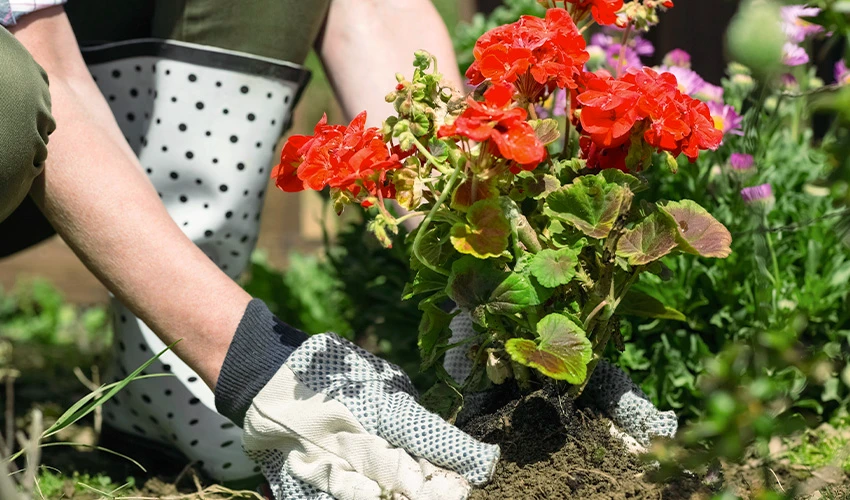
The Grounds Guys guide you on arranging flowers in a flower bed for maximum beauty.
|
A well-arranged flower bed doesn’t just look great; it also allows the plants to thrive. If you’re putting in a new flower bed this spring, don’t be intimidated by the thought of the best way to arrange them! Simply use these expert tips on how to arrange flowers in a flower bed, and you’ll be well on your way to creating a symphony of colors and textures in your garden that adds beauty to your landscape.
Table of Contents:
- Choose the Right Flowers
- Choose Flowers That Create Contrast
- Layer Plants According to Height
- Provide Adequate Spacing
- Consider Bloom Time and Duration
- Think About Sun & Water Requirements
- Visualize Your Future Garden
- Take Colors, Textures, and Shapes into Account
- Is Mixing Annuals and Perennials A Good Idea?
- Consider Plant Heights
- Include a Focal Point
Choose the Right Flowers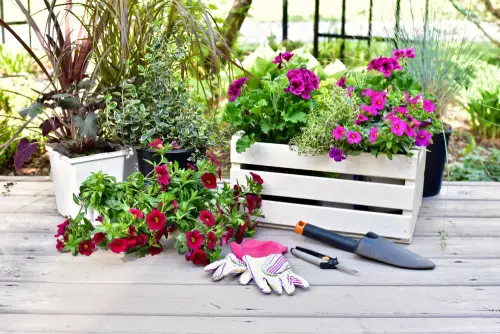
Choosing the right flowers plays a significant role in arranging flower beds in a way that is both beneficial for the plants and beautiful. But creating a design that will make your garden “pop” can be tricky, especially if you’ve never done it before. Of course, it’s nothing a bit of expert advice and guidance can’t solve. Consider the following tips when designing your flower beds:
- Choose flowers that grow best in your area.
- Select show-stopping plants that will act as a focal point for your garden.
- Determine the flower size(s) that fits best in your space.
- Choose flowers that offer year-round interest.
- Select color combinations you love.
- Decide whether the plant's fragrance is essential when choosing flowers.
- Consider flowers that attract hummingbirds, butterflies, and other pollinators.
Choose Flowers That Create Contrast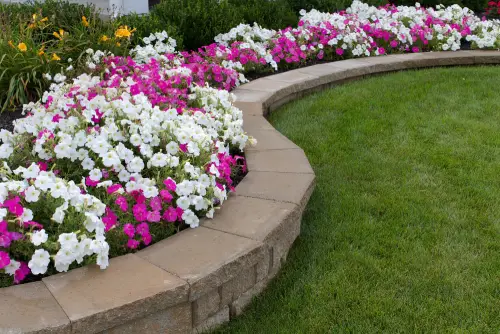
Creating contrast in flower beds always creates interest. Using a color wheel is helpful when arranging flowers in a flower bed. It’s a simple way to create a pleasing color palette. Of course, you don’t always have to use bright and colorful flowering plants. You can achieve contrast by arranging flower beds with black and white plants, too! Combining black and white flowers with dark-leaved plants is an excellent way to add balance and depth to your garden.
Layer Plants According to Height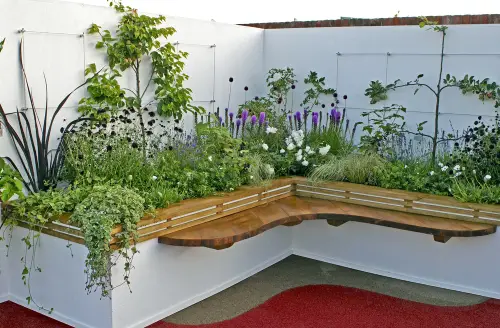
The height and width of your plants are essential to layering plants and creating an appealing visual display. Approach layering plants in a garden bed like taking a large family photo. Place the shorter plants in the front, medium-sized plants in the middle, and the taller ones in the back. Layering plants this way means that every plant will be visible. Of course, these rules aren’t set in stone; you can arrange your garden how you wish! If you’re feeling adventurous, try arranging plants by color and the size of their pedals. Plants with smaller pedals can be placed in or around plants with broader, wider pedals for a striking visual effect.
Provide Adequate Spacing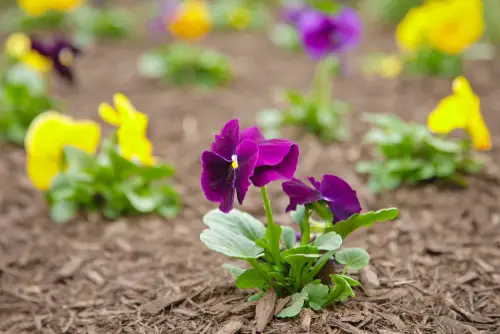
Most flower beds don’t start out looking full and lush, especially if you start with flowers that are young and haven’t started blooming yet. If this is the case, making sure you provide your plants with adequate space is essential when planting and arranging flower beds. A good way to start is to place them in the flower bed while still in their original containers. When you purchase plants, read the label, which will explain the spacing required for the plant to thrive and bloom properly.
Consider Bloom Time and Duration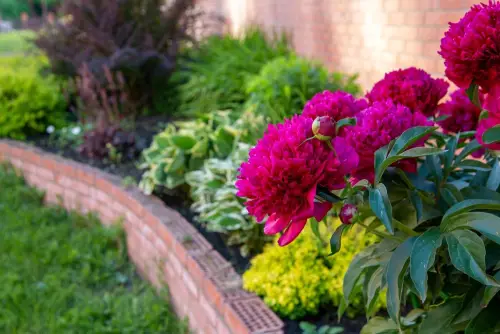
When choosing flowers for your landscape, it’s important to consider when and how often they bloom in a given season. The flowers in your beds don’t have to bloom all at once. While many colorful plants bloom in spring and summer, not all do.Many plants have different blooming seasons, so if you want your flower bed to look attractive all year, consider adding winter flowers that thrive and blossom in the cold, like garden pansies. Some plants will bloom a few times during a given season, including Azaleas, Black-Eyed Susans, Daylilies, and Bougainvillea. This strategy will help keep your flower beds looking full and colorful throughout the year.
Think About Sun & Water Requirements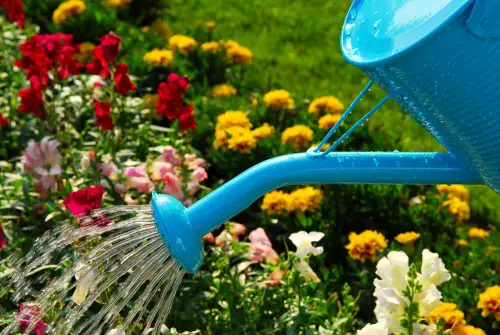
Learning how to arrange a flower bed properly includes creating a layout and design that ensures all your plants will thrive. If the flower bed is in a sunny location, choose plants that thrive in full sun. Likewise, if the bed is located in the shade, part-sun or full-shade plants are a must to ensure success.
When it comes to keeping your plants healthy and looking their best, understanding their watering needs is key. Some plants need water every day, while others will do better with less water. If you live in an area that doesn’t receive a lot of rain during certain months of the year, choose plants that are drought-resistant or less dependent on water to grow and bloom. Conversely, if you live in an area that receives a lot of rain, consider choosing plants that thrive under those conditions. In addition, you may have to install irrigation to ensure your plants receive the water they need to thrive. If you already have irrigation, but aren’t sure if it’s working properly, contact a professional to have your irrigation system checked and repaired before you start planting. Having this work done in advance will avoid damaging your newly planted flowers.
Visualize Your Future Garden
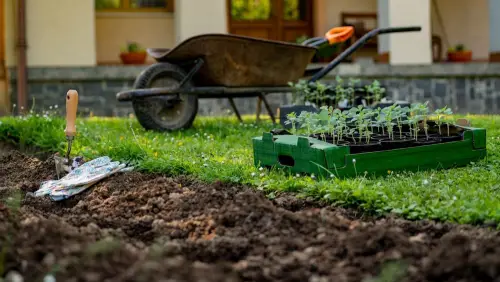
When researching your flower options, be sure to note different plant sizes at maturity, which is a vital consideration when determining the proper distance needed between them. The key is to anticipate what your garden will look like down the road, even if that means it looks sparse when you plant it initially. After all, with proper care and planning, in a few months, your flowers will grow much fuller, taller, and more colorful. So, to avoid overcrowding them and reducing their visual appeal, think ahead. Remember to read the space requirements included on the label of the plants you purchased. This will help you plan ahead and ensure your garden looks great!
Take Colors, Textures, and Shapes into Account
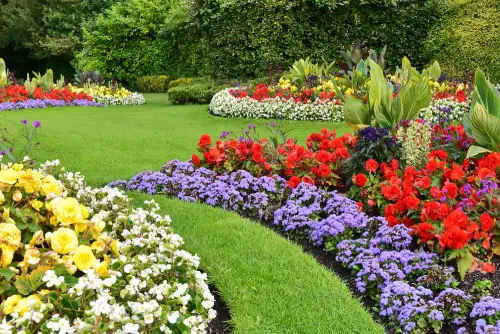
Consider choosing a color scheme, such as monochromatic, harmonious, contrasting, or complementary. If you decide to include a wide spectrum of hues, spread the colors evenly throughout the garden. Remember, flowers don’t bloom simultaneously. Consider staggered bloom times and incorporate this into your strategy to ensure visual interest throughout the growing season.
Texture and shape are also important considerations. For the most visual interest, include plants with a mix of small and large flowers, solid and variegated foliage, short and long stems, round and spear-shaped leaves, and any other variation that makes for an interesting combination. Spread them all around the garden to create a well-balanced look.
Is Mixing Annuals and Perennials A Good Idea?
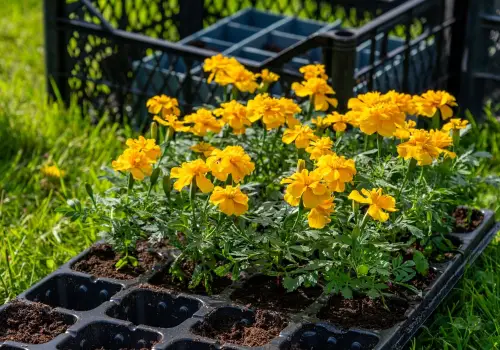
Yes, anchoring the flower bed with perennials helps form the structure of your garden. Since they return year after year, perennials also reduce the chore of planting a new garden every spring. Still, you may want to incorporate some annuals to enjoy a little diversity every summer. We recommend experimenting with different combinations until you find a mix that works for you. If you need help, contact a local garden expert for advice and suggestions.
Consider Plant Heights
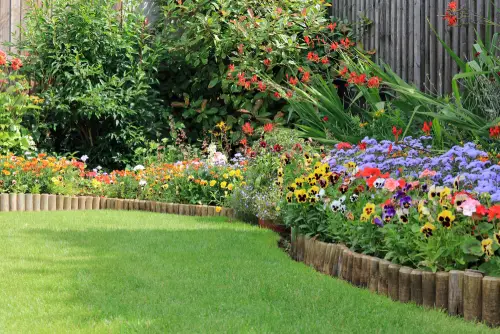
If you purchase seedlings for your flower garden, everything may be close to the same height. However, knowing how tall some plants will grow over the months (and years, in the case of perennials) will determine their appropriate location in your flower bed.
The goal is to create a backdrop of plants to serve as a “canvas” for the rest of the arrangement. When layering your garden bed, plant tall, full shrubs in the back row. Medium-sized perennials belong in the middle row. Finish it off with a low-growing mix of colorful annuals and perennials in the front row. A nicely layered garden bed ensures maximum visual appeal once all the plants mature.
Include a Focal Point
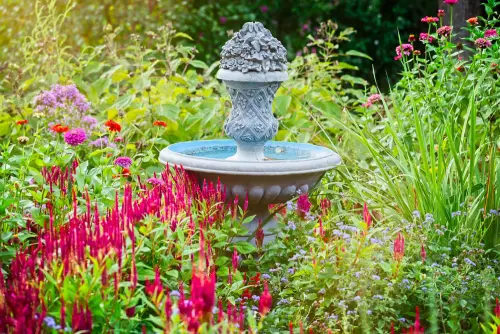
Whether you add a piece of garden art, bird fountain, or ornamental tree, consider including a focal point somewhere in your flower bed. This catches the eye, giving it a place to start before meandering over the rest of your beautiful garden.
Need Help Creating Your Beautiful Flower Bed?
A colorful array of flowers that are nicely arranged around your home will delight the senses and add curb appeal. The fun begins when you learn how to arrange flower beds that not only look great, but that remain healthy and thriving too! For more information on the best flowers for your area or assistance arranging flower beds on your property, find The Grounds Guys® location nearest you. We are happy to answer your questions. We also offer flower bed maintenance to keep your garden looking its best year after year.
And as part of the Neighborly family of home service brands, all our work is backed by the Neighborly Done Right Promise®, which means your satisfaction is guaranteed. Contact us today for a free estimate!